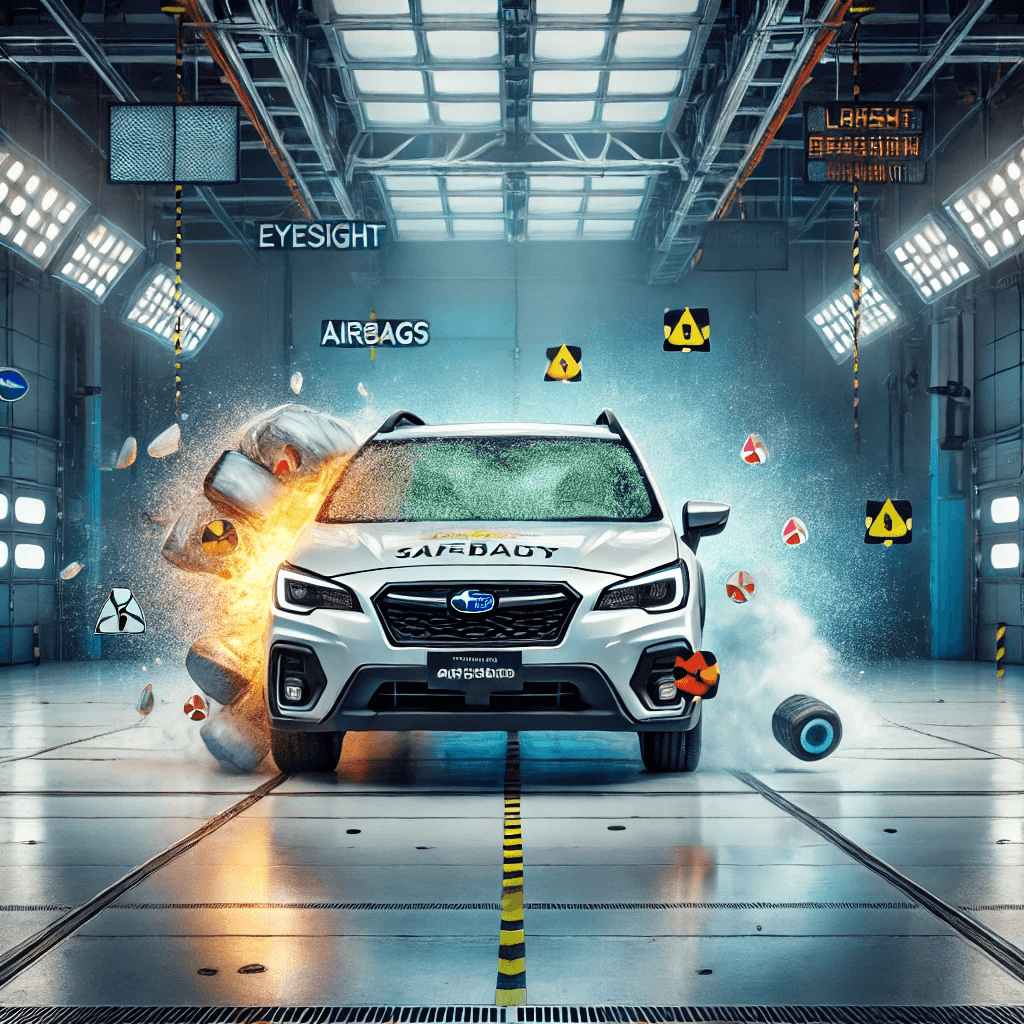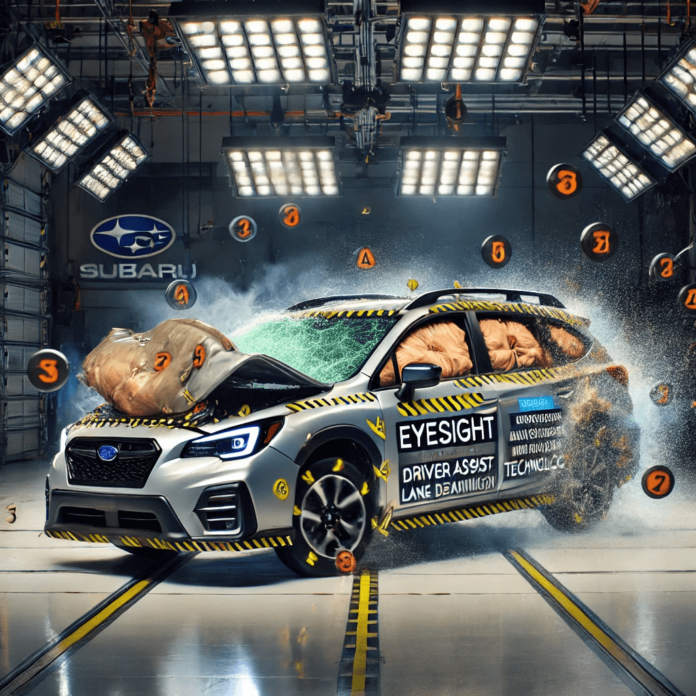Introduction
Subaru safety ratings consistently rank high across various models, thanks to the brand’s commitment to advanced Subaru safety features and rigorous Subaru crash test performance. Understanding what these ratings mean can help you choose a vehicle that prioritizes your safety on the road. In this article, we’ll delve into Subaru’s safety ratings, explore the safety features that contribute to these high scores, and examine how Subaru models perform in crash tests.
Understanding SubaruSafety Ratings

What Are Safety Ratings?
Safety ratings are assessments provided by various agencies that evaluate the safety of vehicles based on specific criteria. These ratings are crucial for consumers as they provide an independent overview of how well a vehicle can protect its occupants in different crash scenarios.
Each agency conducts a series of tests to evaluate a vehicle’s performance in various crash scenarios.
Why Safety Ratings Matter
Safety ratings play a significant role in determining a vehicle’s overall value and appeal. High safety ratings can influence a consumer’s decision, increase a car’s resale value, and even lower insurance premiums.
- Impact on Insurance Premiums: Vehicles with high safety ratings often qualify for lower insurance premiums because they are statistically less likely to result in severe injuries or fatalities in the event of a crash.
- Influence on Consumer Choice: For many buyers, a vehicle’s safety rating is a top consideration, particularly for those who regularly drive with family or in challenging conditions.
Subaru’s Commitment to Safety
Subaru’s Safety Philosophy
Subaru’s approach to vehicle safety focuses on both preventative and protective measures, aiming to avoid accidents whenever possible and to protect occupants if an accident does occur.
- Focus on Preventative and Protective Measures: Subaru integrates advanced safety technologies, such as EyeSight Driver Assist Technology, which includes features like adaptive cruise control, lane departure warning, and pre-collision braking.
- Continuous Improvement in Safety Technology: Subaru is committed to continuously improving its safety features, staying ahead of regulatory requirements, and integrating the latest advancements in automotive safety technology.
Safety Features in Subaru Vehicles
Subaru vehicles come equipped with a range of standard and optional safety features designed to enhance both active and passive safety.
- EyeSight Driver Assist Technology: EyeSight is a suite of driver-assist technologies that monitors traffic movement, optimizes cruise control, and warns you when you’re swaying outside your lane. It can even apply full braking force in emergency situations.
- Subaru’s Advanced Airbag Systems: Subaru’s advanced airbag systems are designed to deploy in the optimal manner to protect occupants, using sensors to assess the severity of a crash and determine the necessary response.
Breakdown of Subaru Safety Ratings
Subaru’s NHTSA Ratings
The NHTSA provides safety ratings for Subaru models, evaluating them in crash tests that simulate real-world accidents.
- What NHTSA Ratings Mean for Subaru Models: High NHTSA ratings indicate that a Subaru vehicle has performed well in frontal, side, and rollover crash tests, demonstrating its ability to protect occupants in a variety of crash scenarios.
- Subaru Models with Top NHTSA Ratings: Many Subaru models, including the Outback, Forester, and Ascent, have received 5-star overall safety ratings from the NHTSA, the highest rating possible.
Key Safety Features That Boost Subaru Ratings
Advanced Driver Assistance Systems (ADAS)
Subaru’s suite of advanced driver assistance systems plays a critical role in achieving high safety ratings.
- EyeSight Driver Assist Technology: This system includes adaptive cruise control, pre-collision braking, lane-keeping assist, and more, helping to prevent accidents before they occur.
- Subaru Rear Vehicle Detection (SRVD): SRVD provides blind-spot detection, lane change assist, and rear cross-traffic alert, enhancing situational awareness and helping to avoid potential collisions.
Subaru Global Platform
The Subaru Global Platform is a critical component in Subaru’s safety strategy, providing a strong foundation for all its vehicles.
- Enhanced Structural Integrity: The platform is designed to absorb more energy in a collision, protecting occupants more effectively.
- Improved Crash Energy Absorption: This design also contributes to better handling and stability, further enhancing the vehicle’s safety profile.
Subaru vs. Competitors in Safety Ratings
Subaru vs. Toyota
When comparing Subaru to Toyota, both brands have strong safety records, but there are distinct differences in their approaches to safety.
- Safety Features Comparison: Subaru’s EyeSight Rating system is standard on many models, while Toyota’s Safety Sense is optional or included only in higher trims.
- Crash Test Results and Ratings: Subaru often edges out Toyota in IIHS crash tests, particularly in the small overlap front tests, thanks to its robust structural design and advanced safety features.
What High Safety Ratings Mean for Drivers
Increased Driver Confidence
Driving a vehicle with high safety ratings can significantly enhance driver confidence, knowing that the vehicle is well-equipped to protect its occupants.
- Peace of Mind on the Road: Knowing that your vehicle has been rigorously tested and proven to perform well in crashes provides peace of mind for drivers and passengers alike.
- Enhanced Driving Experience: High safety ratings often correlate with advanced safety technologies, which can make driving easier and more enjoyable by reducing the stress and fatigue associated with long trips or heavy traffic.
Financial Benefits
Choosing a vehicle with high safety ratings can also have financial advantages.
- Potential Lower Insurance Costs: Insurers often offer discounts for vehicles with high safety ratings, which can result in lower premiums.
- Better Subaru Resale Value: Vehicles with high safety ratings tend to have better Subaru resale values, as safety is a key consideration for many used car buyers.
Customer Testimonials and Real-World Experiences
Stories from Subaru Owners
Many Subaru owners share their experiences with the brand’s safety features, often highlighting how these features have prevented accidents or reduced the severity of collisions.
- How Safety Features Saved Lives: Testimonials from Subaru owners frequently mention instances where features like EyeSight and advanced airbags have been lifesaving.
- Reliability of Safety Systems in Accidents: Owners also praise the reliability and effectiveness of Subaru’s safety systems in real-world accidents.
Conclusion
Subaru’s dedication to safety is evident in its high ratings from both NHTSA and IIHS. With a focus on both active and passive safety features, Subaru vehicles are designed to protect their occupants in all driving conditions. For those prioritizing safety, Subaru remains a top choice.














